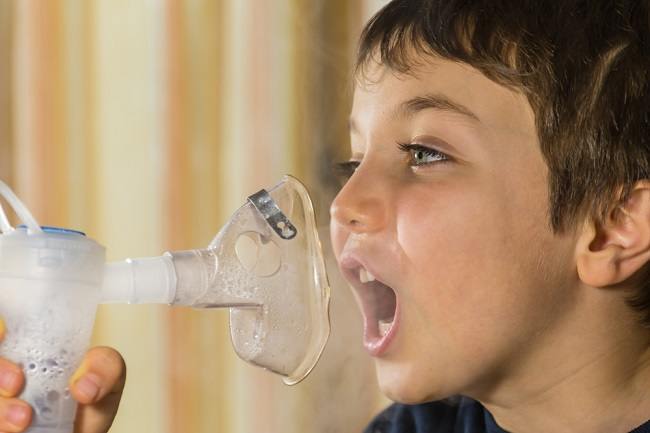Blindness is a condition in which a person's vision is completely lost in one eye (partial blindness) or both (complete blindness). This condition can appear suddenly, such as when experiencing a severe injury as a result of an accident, or as a complication of an underlying illness.
There were more than 3 million Indonesians who experienced severe visual impairment and blindness in 2013, and cataracts are the most common cause of blindness, both in Indonesia and in the world. From the Riskesdas data, it is also said that the elderly over 75 years are most at risk of experiencing blindness.

Causes of Blindness
The causes of blindness are very diverse, but basically this condition is caused by damage to the eye. Damage to the eye itself can occur due to a severe injury due to an accident or a complication of a disease suffered, such as a stroke in the eye or gene abnormalities at birth. Some of the conditions that can cause blindness include:
- Phthisis bulbi.
- Cataract.
- Glaucoma.
- Macular degeneration.
- Corneal opacities.
- Refractive disorders such as nearsightedness or farsightedness that is not corrected.
- Trachoma.
- Diabetic retinopathy.
- Amblyopia or lazy eye.
- Optic neuritis.
- Tumor or cancer of the eye that interferes with the retina and optic nerve.
In children, blindness can occur from birth. Blindness from birth can be inherited or caused by infections that are passed from the mother to the fetus during pregnancy. In addition, there are several other factors that can cause blindness in children, namely:
- Lazy eyes.
- Trachoma.
- Strabismus or squint.
- Ptosis or drooping of the upper eyelid.
- Glaucoma or hereditary cataracts.
- Blockage of tear ducts.
- A gene abnormality that causes the development of a child's visual system to become abnormal.
- Retinopathy of prematurity, a condition that can be experienced by babies born prematurely, in which the blood vessels in the retina experience abnormalities due to disturbances in its development.
Blind Symptoms
Blindness is characterized by loss of vision. The loss of vision itself is caused by damage to the eye, which can arise from certain injuries or conditions. Damage to the eye that occurs due to disease, generally causes visual disturbances first, before eventually becoming blind. Visual disturbances that appear can include:
- The lens of the eye is cloudy so that the clarity of vision is poor.
- Decreased or blurred vision.
- Eyes hurt.
- Discomfort in the eyes that lasts a long time.
- Eyes reddened.
In some cases, such as in people with glaucoma, the damage to the eye causes no symptoms. Therefore, regular check-ups are necessary to prevent visual disturbances that can lead to total blindness.
In children, parents can detect visual disturbances by observing the symptoms that appear. Children have the potential to experience interference if they show symptoms in the form of:
- Frequent scratching or rubbing of eyes.
- Sensitive to light.
- Eyes reddened.
- Often closes one eye.
- Swelling of the eyes.
- Unable to follow the movement of an object.
- Abnormal eye movement or position at 6 months of age.
Blind Diagnosis
In diagnosing blindness, the doctor will examine the existing symptoms, physical condition, and patient's medical history. The doctor will also ask when this condition has been experienced, and whether the condition is improving or not. This initial examination aims to suspect the cause of blindness and determine the tests that will be used in the diagnosis process.
To be sure, your doctor may order a series of tests to examine your eyes, such as:
- Testsharpness. This test uses a graph of letters of different sizes. The patient will be asked to close one eye, stand a certain distance, and read the letter the doctor points to on the chart.
- Testfield of view. This test aims to check the presence or absence of disturbances in certain parts of the patient's field of view or range of vision. The doctor will ask the patient to respond to light or movement that will be signaled at different angles, without having to move the eyes.
- Slitlamp.slit lamp is a test that uses a special instrument, in the form of a microscope, which aims to examine the cornea, iris, lens of the eye, and the fluid-filled space between the cornea and iris.
- Ophthalmoscopy. This test aims to examine the condition of the back of the eye through an instrument called an ophthalmoscope. Generally, before the test is carried out, the patient will be given special drops so that the pupil does not shrink during the examination.
- Tonometry.This test uses a special instrument to measure the pressure in the eye that can cause blindness. Tonometry used to detect and monitor glaucoma treatment.
Blind Treatment and Prevention
Most of the diseases that cause blindness can be overcome, so it will indirectly prevent blindness itself. For example, blindness due to cataracts, which is the most common cause of blindness in Indonesia and the world, can be prevented by cataract surgery, which is surgery to replace the cloudy eye lens with a clean artificial lens. Before performing surgery, first consult with your doctor regarding the benefits and risks.
To prevent visual disturbances that can lead to blindness, the following measures can be taken:
- Eye exams every 2-3 years for people under 50 years old, and once a year for people over 50 years old or if you have risk factors for vision problems.
- Avoid consuming alcohol and smoking.
- Apply a healthy lifestyle, such as adequate rest.
- Eat a balanced nutritious diet.
- Use safety equipment when doing activities that pose a risk of injuring your eyes, such as when exercising or driving.
For patients who have experienced blindness can adapt to:
- Learn lettersbraille.
- Using special equipment, such as a computer with keyboard alphabet braille.
- Help stick.
- Use dogs as guides.
- Take advantage of the GPS navigation feature with voice to walk.









